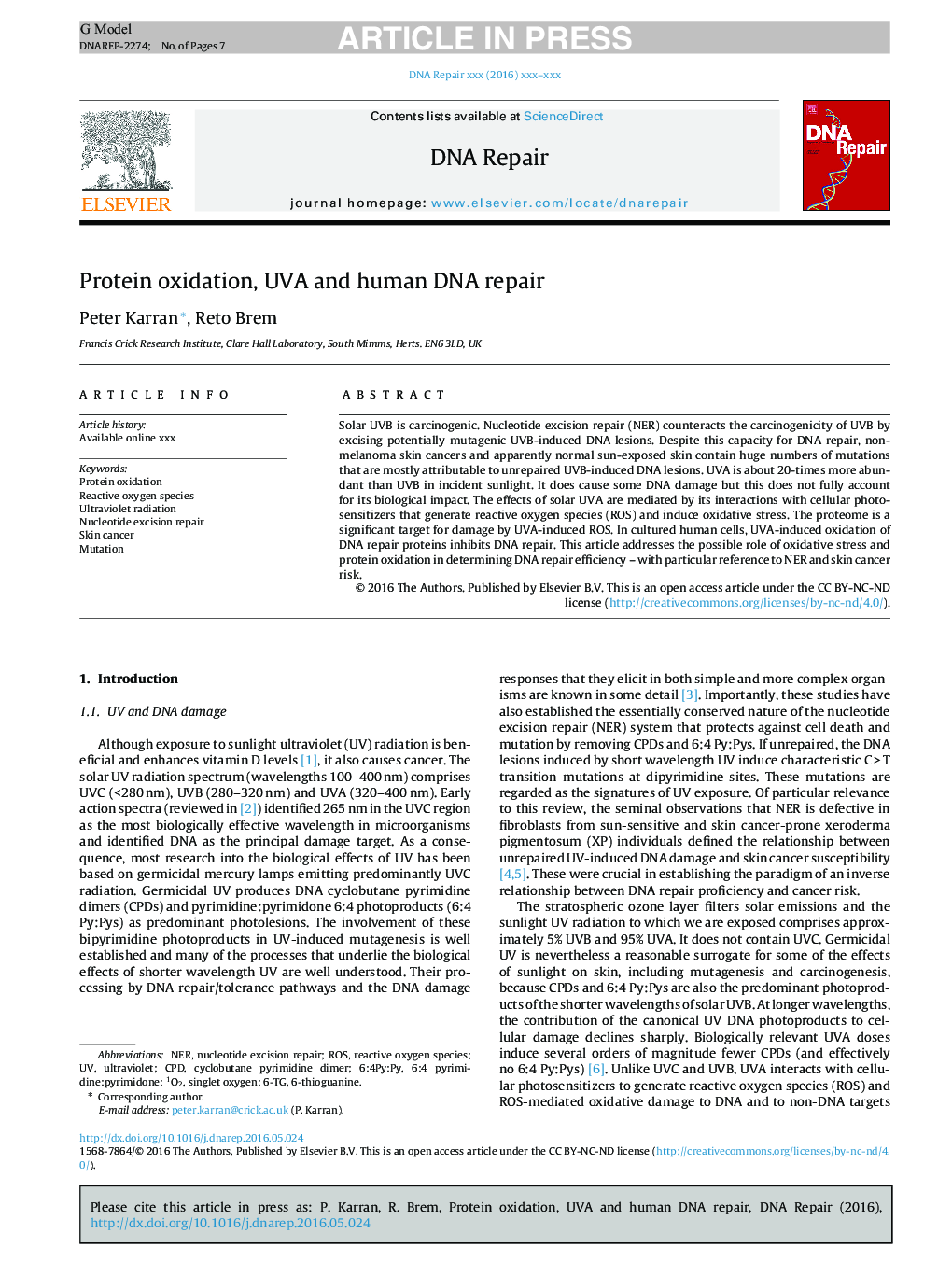| Article ID | Journal | Published Year | Pages | File Type |
|---|---|---|---|---|
| 8320503 | DNA Repair | 2016 | 7 Pages |
Abstract
Solar UVB is carcinogenic. Nucleotide excision repair (NER) counteracts the carcinogenicity of UVB by excising potentially mutagenic UVB-induced DNA lesions. Despite this capacity for DNA repair, non-melanoma skin cancers and apparently normal sun-exposed skin contain huge numbers of mutations that are mostly attributable to unrepaired UVB-induced DNA lesions. UVA is about 20-times more abundant than UVB in incident sunlight. It does cause some DNA damage but this does not fully account for its biological impact. The effects of solar UVA are mediated by its interactions with cellular photosensitizers that generate reactive oxygen species (ROS) and induce oxidative stress. The proteome is a significant target for damage by UVA-induced ROS. In cultured human cells, UVA-induced oxidation of DNA repair proteins inhibits DNA repair. This article addresses the possible role of oxidative stress and protein oxidation in determining DNA repair efficiency - with particular reference to NER and skin cancer risk.
Keywords
Related Topics
Life Sciences
Biochemistry, Genetics and Molecular Biology
Biochemistry
Authors
Peter Karran, Reto Brem,
